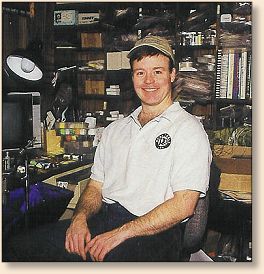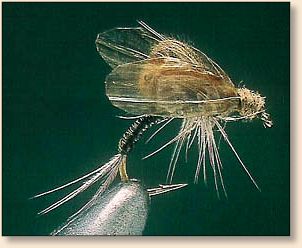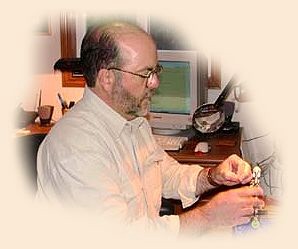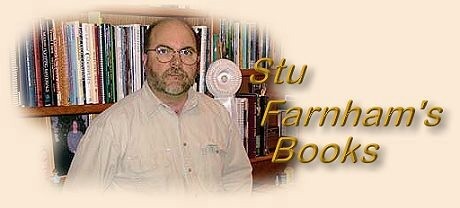|
The Internet is a powerful resource. It provides us instant
access to information, and brings us together via email,
bulletin boards, chat rooms, and instant messaging. FAOL
is a wonderful example of the Internet at its best. The Internet,
however, will never replace the printed page.
I've loved books and fishing since my youngest years, although
I did not start fly fishing until 1993. This column will give
me an opportunity to share reviews of some of my favorite fly
fishing and tying books (and some that are not such favorites)
with my friends here at FAOL. My library reflects my tastes
and interests, and so will this column. It will be heavily
slanted towards cold water fishing and tying for trout and
steelhead, and won't touch much on areas of which I know little,
such as warm or salt water fishing.
I hope that these reviews will motivate some of you to pick up
a good book, on this or any subject, and read.
~ Stu Farnham
Mayflies Top to Bottom
 Mayflies Top to Bottom
Mayflies Top to Bottom
by Shane Stalcup
Spiral-bound; 158 pages
Publisher: Frank Amato Publications, (December 2002)
ISBN: 157188343X
One might infer from the title of this book that it
is a book on aquatic entomology, or full of specific
hatch-matching patterns. That's not the case. Rather,
Colorado fly tier Shane Stalcup describes the application
of his favorite materials and methods to imitating mayflies
throughout their lifecycle. Many - including Stalcup
himself in his introduction - characterize his tying
style as realistic. I disagree with this characterization,
considering his flies to be more impressionistic. There's
little question that flies tied by Shane are buggy, however.

As typical of many tying books, Stalcup opens with sections
on tools and materials. Rather than attempting to provide
a survey of all the tools and materials one might need as
a fly tier, Stalcup offers advise on vises (he likes the
durable HMH line), hackle pliers (he likes the so-called
English style for wrapping biots), and scissors (keep 'em
sharp). Similarly the sections on materials and techniques
don't pretend to be encyclopedic. Instead Shane limits
himself to the materials and techniques used in tying
the patterns in this book. Here you'll find a couple
of dozen ways of tying trailing shucks; several methods
for making extended bodies, and tips on tying with tubing
(Z-rib, Larva Lace, etc) and with biots.
The chapter on nymphs provides a prototype for the other
chapters of the book. A basic style of fly - in this case
a biot bodied nymph with partridge tail and legs - is
presented, followed by variations in color and material
(tubing instead of biots) to better match specific
varieties of mayfly. Shane also offers some very buggy
looking nymphs with ostrich or marabou bodies, again
with color variations, as well as his own take on the
Hare's Ear and Pheasant Tail nymphs.
I think it is in his emerger and cripple patterns where
Shane's tying really shines. Beginning with his emerging
nymph pattern he calls the Swimming May, Stalcup applies
materials to the hook in ways that come alive. Particular
favorites of mine include his Loop Wing Emerger (biot body,
partridge tail and legs, CDC loop wing, and dubbed thorax),
CDC Emerger (similar to the Loop Wing Emerger but with CDC
feathers tied as folded wings), and his Parachute Emerging
Dun, which is similar in its construction to Ian Moutter's
paraloop flies.

The adult stages of the mayfly are also well represented.
The Compara May combines hackle wrapped in a 180-degree
fan wing combined with hen hackle tips a la AK Best. I
fish a variation of Shane's Deer Dun over March Browns
on Oregon's McKenzie River.
The book is published by Frank Amato Publications in their
familiar 9x12 inch large format. My copy is hardbound with
a spiral binding which allows the book to lay open flat
on a table or desk. The production of the book is excellent,
with easy to follow layout and lots of large, clear color
photos illustrating the text.
In summary, this book is not an encyclopedic reference volume.
Instead, I think it provides great examples of the creative
use and combination of techniques and materials to create
a series of buggy fly patterns that will allow you to present
something just a bit different to selective trout.
~ Stu Farnham
About Stu
 Stu Farnham is a New Englander by birth, who was transplanted to
and put down roots in Oregon in the early 1990s, now residing in
the Seattle area. A software engineering manager by vocation,
he can be found in his spare time chasing trout and steelhead
in the rivers of the Pacific Northwest, chasing his four Gordon
Setters (who in turn are chasing chukar), tying flies, reading,
or working on his website. Colleen, his long suffering wife of
28 years, is a professionally trained personal chef.
Stu Farnham is a New Englander by birth, who was transplanted to
and put down roots in Oregon in the early 1990s, now residing in
the Seattle area. A software engineering manager by vocation,
he can be found in his spare time chasing trout and steelhead
in the rivers of the Pacific Northwest, chasing his four Gordon
Setters (who in turn are chasing chukar), tying flies, reading,
or working on his website. Colleen, his long suffering wife of
28 years, is a professionally trained personal chef.
|

 Mayflies Top to Bottom
Mayflies Top to Bottom
 Stu Farnham is a New Englander by birth, who was transplanted to
and put down roots in Oregon in the early 1990s, now residing in
the Seattle area. A software engineering manager by vocation,
he can be found in his spare time chasing trout and steelhead
in the rivers of the Pacific Northwest, chasing his four Gordon
Setters (who in turn are chasing chukar), tying flies, reading,
or working on his website. Colleen, his long suffering wife of
28 years, is a professionally trained personal chef.
Stu Farnham is a New Englander by birth, who was transplanted to
and put down roots in Oregon in the early 1990s, now residing in
the Seattle area. A software engineering manager by vocation,
he can be found in his spare time chasing trout and steelhead
in the rivers of the Pacific Northwest, chasing his four Gordon
Setters (who in turn are chasing chukar), tying flies, reading,
or working on his website. Colleen, his long suffering wife of
28 years, is a professionally trained personal chef.
